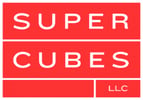The First 3 Big Questions: Container Project Planning Part 1 of 2

A stand-alone 20’ container hotel room that can move around
When you are in the early stages of a container project, it is important to figure out the general scope of your project. You should have a rough idea of how many containers you think you will need, an idea of how you plan on using them and what general modifications you want. Are you looking to take a container and make a few tweaks to make it your own or are you planning a large, multi-container complex? Obviously, these are two ends of the spectrum, but having a good understanding of where you want to go will help in figuring out what you need to do.
Please keep in mind the following:
-
If you are looking for just a few minor modifications to a container, you may or may not need to involve anyone else in your project. The real focus is getting the work done the way you want it.
-
If you are looking for a home or retail space, things will get more complicated more quickly. You will need to look into local zoning issues, more detailed plans and involve more people in creating and following through with those plans.
-
Another thing to keep in mind is that the more you plan on taking away from a container (i.e. Removing full sides of the container, creating large windows, etc.) and/or stacking containers, the more complicated the project will be.
You have a rough idea of what you want, but there are still a ton of unanswered questions. You need experts to help you out in seeing what’s realistic for what you want to do. So, where do you turn next? Usually that is a 3-part answer. There are 3 things that you have to look at almost all at the same time. There are the containers themselves, the project’s design plan, and the feasibility of the project. There are many more issues to consider, but these questions help you figure out the rest of it.

A recent customer stacked these 9 Super Cubes containers for a new home in St Louis
1. The Containers
Containers come in three standard sizes and conditions. We also have some specialty containers that can also come in handy. Pricing will vary on the size and condition of the container as well as where you are located. Give us a call to get an idea of how much containers cost and how much they will cost to get to you.
To help with some of this, seeing the below specs on our standard container sizes and conditions of our containers: wind-and water-tight, cargo-worthy and one-trip. Also, viewing our container basics page is a great reference as well.

Max Gross: Weight of Full Container (Container Filled to Rim)
Tare: Weight of Container (Weight of Empty Container)
Net: Weight Capacity (Max Gross minus Tare)
2. The Project Design
The most exciting part of the project is the design work. You have an image in your head of what you want to do. It is time to put that down on paper or on a screen to show everyone else your vision (what you want to do). Once you communicate it with someone else, your project will probably fall into one of three categories:
-
Small, straightforward modifications, no structural elements. This is the most basic project. It’s just one container, you’re adding in a door and/or a window or two and that is about it. Overall, the container stays basically intact.
-
Smaller project, but some structural elements. Your project is still small, but has some part of it that requires a bit of structural work. It might be a large opening between two containers or large doors that reduce the structural integrity of the container.
-
Larger projects with structural elements. This would be any home, multi-container structure, or other projects that have considerable structural elements to it (i.e. stacking, larger cut-out sections, etc).
If you do need some structural help, we strongly recommend working with a structural engineer and/or an architect. They will create plans that will help in the next few stages of your project. Those designs will be needed for any zoning and building code approvals as well as for pricing the cost of any desired modifications. These professionals will ensure that your design is safe. However if you are doing a smaller project with just a door or window, you can easily draw that up yourself.

A 50-container shrimp farm we helped with in Los Vegas, NV.
Super Cubes does not have a design team. We can help with modifications, but we would either need a design that you draw up, one from your structural engineer or architect.
3. Feasibility
Where you are putting your project also is a big part of the equation. If you are building a house, does your project need to meet any building requirements by your city, county or state? Are you zoned for the type of project you have? What about the land itself? What preparations do you need to make to ensure you have the proper foundation for your project? These are all critical questions that you will need to investigate before you get too far on your project. You may need to work with a variety of different people to get to all of these answers. Often you will need some of the design work done before getting too far into the feasibility work on your project.
Stayed tune for Part 2 in this series when we talk about modifications and other services needed for your project!
Tags:
container project, container walls, container conditions, container home modifications, container preparations, container hotel, container modificationsOctober 5, 2018
